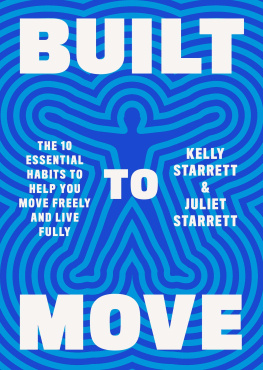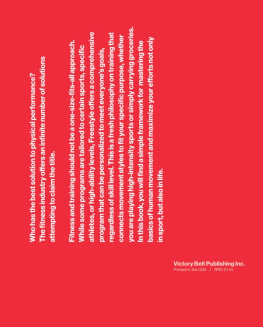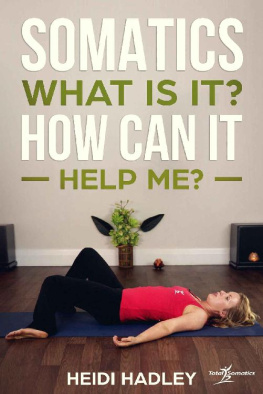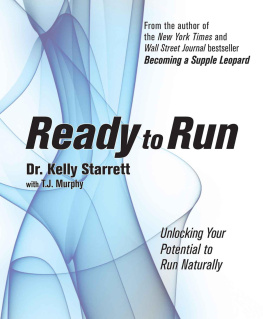Victory Belt Publishing Inc.
All rights reserved. First edition published 2013
No part of this publication may be reproduced or distributed in any form or by any means, electronic or mechanical, or stored in a database or retrieval system, without prior written permission from the publisher.
This book is for educational purposes. The publisher and authors of this instructional book are not responsible in any manner whatsoever for any adverse effects arising directly or indirectly as a result of the information provided in this book. If not practiced safely and with caution, working out can be dangerous to you and to others. It is important to consult with a professional fitness instructor before beginning training. It is also very important to consult with a physician prior to training due to the intense and strenuous nature of the techniques in this book.
Printed in the U.S.A.
CONTENTS
PART 1
PRINCIPLES AND THEORY
PART 2
CATEGORIES OF MOVEMENT
PART 3
MOBILIZATION TECHNIQUES
 AREA 2: Upper Back
AREA 2: Upper Back
(Thoracic Spine, Ribs, Trapezius, Scapula)
AREA MAP

PART 4
MOBILITY PRESCRIPTIONS
PREFACE TO THE EXPANDED AND UPDATED EDITION
When I began writing Becoming a Supple Leopard back in 2011, I had two goals:
Create an all-encompassing, open-ended system for human movement that teaches people how to predict and resolve dysfunctional movement patterns that can impede performance and lead to injury or pain.
Give people the tools they need to perform basic, routine maintenance on their bodies so that they have a model for preventing, treating, and resolving injury and pain, as well as improving mobility (joint and tissue restrictions).
Becoming a Supple Leopard (BASL) hit stores in April 2013 and was an immediate success, selling more than 100,000 copies in the first few months and making the Wall Street Journal and New York Times bestseller lists. From The View to 60-Minute Sports, the ideas and methods from the book have reached audiences I never could have imagined. From elite military forces to professional sports teams, the concepts, movements, and mobility techniques have been tested at the highest levels. The system has worked equally well for children and weekend warriors. From universities and elementary schools to corporate giants like Google, the original principles and techniques have been broken down into their simplest forms, making the practices available to everyone, regardless of age, body type, or fitness level.
Although I accomplished my goals with the original book, working and testing the ideas in these environments has enriched my system in unexpected ways. The system has evolved. Its better and stronger than ever beforewhich is one of the main reasons for publishing this expanded and updated edition. These changes have dramatically improved the system, making the concepts and techniques much easier to learn, digest, and implement.
The truth is, I wrote BASL with athletes and coaches in mind. And I was focused on performance. Pain resolution and injury prevention have always been part of the conversation, and I do believe that the original book provided the tools to treat and resolve chronic pain and prevent injury, but, admittedly, the book was not organized in a way that catered to novices or laypersons. This time around, it is. Whether youre a deskbound weekend warrior or an athlete competing at the highest levels, the original practices have been refined and improved, making them accessible to everyone.
The second reason for publishing this expanded and updated edition is you, the reader. The reviews posted on Amazon and other bookseller websites provided me with invaluable feedback. The comments and questions posted on my blog and social media pages also played a key role in the evolution of the system. This confluence of feedback and constructive criticism helped me turn BASL into a more comprehensive, detailed manual, for which I am very grateful.
So Whats Changed?
To improve the overall quality, readability, and navigability of the book, Ive made a lot of changes. Lets start with whats been added to the book.
This edition contains more than 80 pages of new content, including nearly 50 new mobility techniques. ).
Another small yet significant addition is the Chapter Highlights section located at the end of each chapter, which summarizes the key takeaways. Ive also added illustrations and graphics to support and clarify some of the more complex and salient concepts and techniques. And, as many readers have requested, anatomy images have been infused into the mobility sections as a way of highlighting important muscles, joints, and body parts.
In addition to adding new content, Ive made changes to enrich the original text and images. Ive reworked each chapter and clarified some language that might have confused or misled readersspecifically the Laws of Torque chapter and the ever-controversial straight foot stance description and shove your knees out cue in reference to the squat.
Finally, dramatic improvements have been made to make navigating the book easier, starting with a detailed index. Colored tabs have been added along the sides of the pages so that you can quickly flip to a specific part. Ive even expanded the A Guide to Using This Book section, which serves as a road map for reading the book. Even if youve read the first edition, I highly recommend that you review this section first before you delve into the other chapterssee pages 1012.
The most important change with regard to navigability is the organization of the parts and chapters. In the first edition, I presented the chapters sequentially, which admittedly made browsing difficult. To remedy this issue, I have lumped all the principles and theory into one part and divided the movements and mobilization techniques into two separate parts. This consolidates all the core principles that comprise the system into one section and enables you to browse the techniques based on what you want to work on or which techniques youre interested in learning.
Heres a brief summary of what you can expect to learn in each section:
Part 1, Principles and Theory: This is the most important part of the book because it encompasses the core of my system and lays the groundwork for the movements and mobilization techniques covered in parts 2 and 3, as well as the mobility prescriptions featured in contains all the information you will need to understand, implement, and teach my system.
Part 2, Categories of Movement: This part contains all the exercise movementssquats, pushup, clean, and so onthat are used to help test, instill, and progress the principles covered in .













 AREA 2: Upper Back
AREA 2: Upper Back
